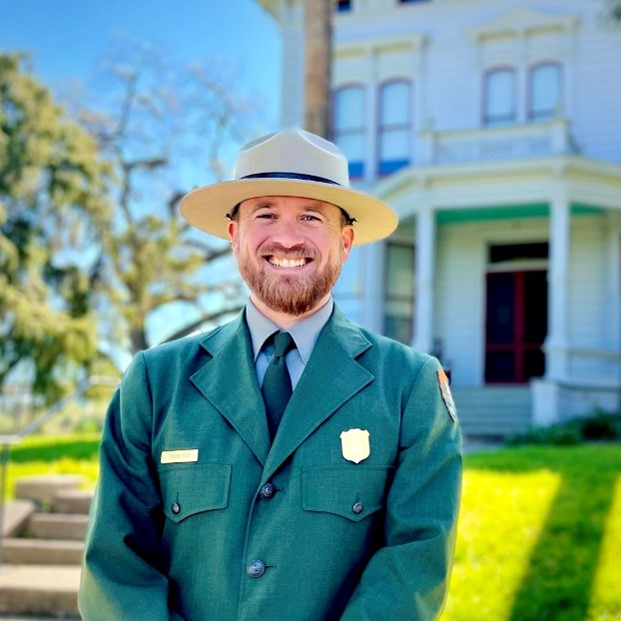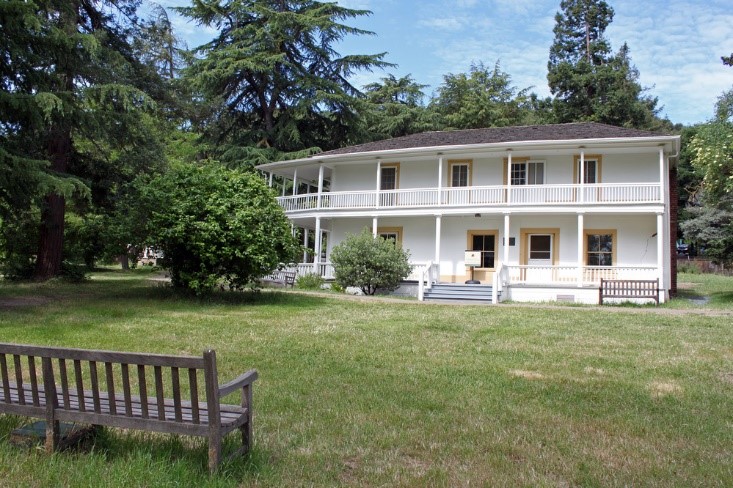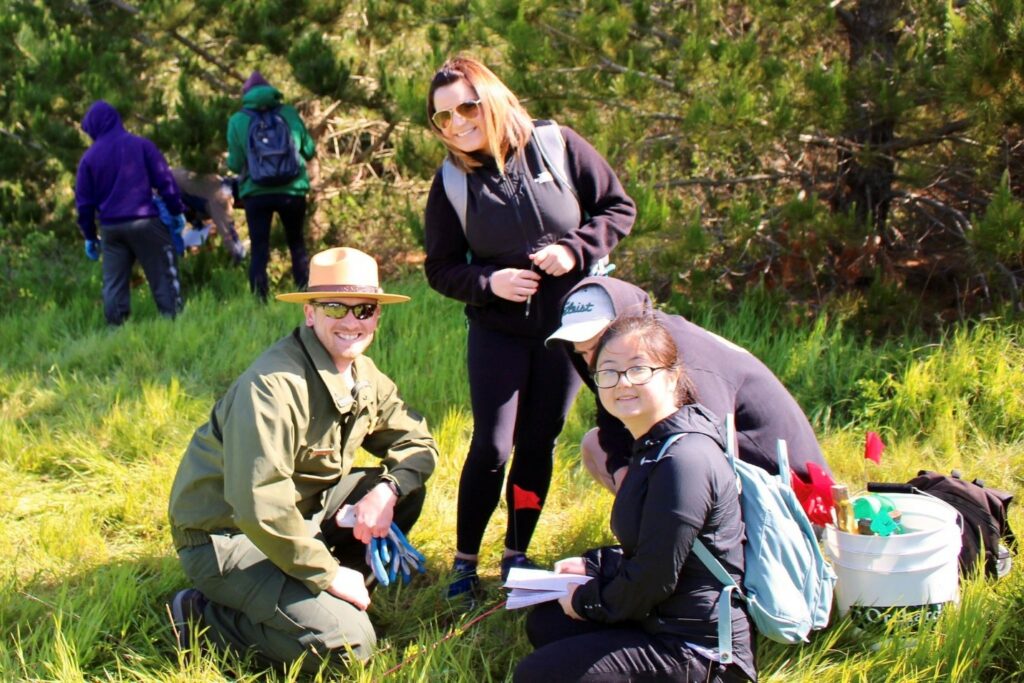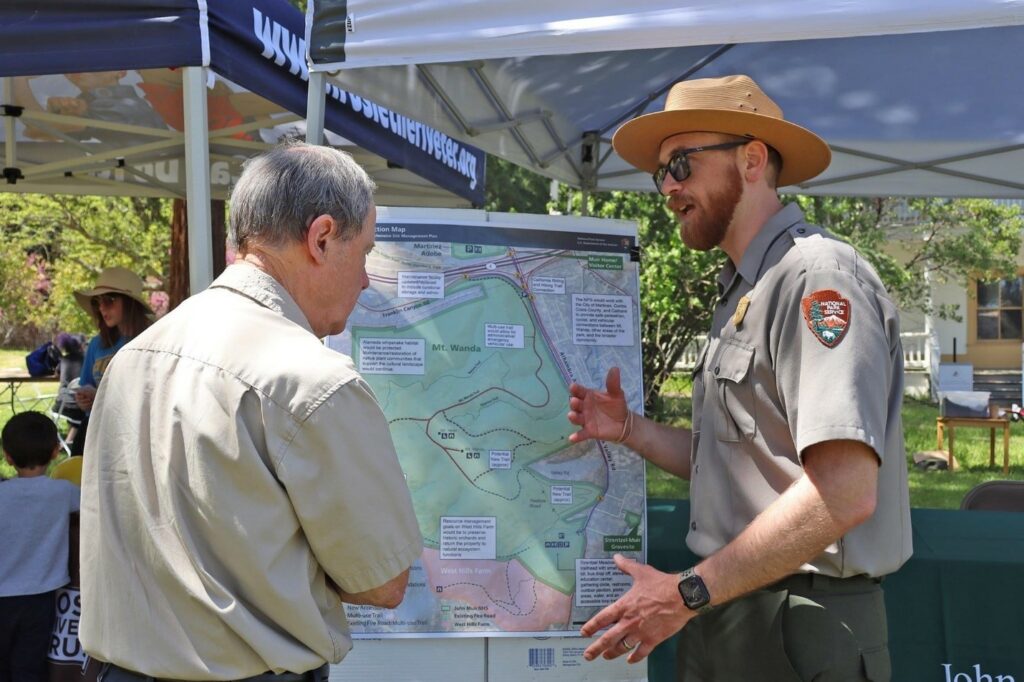By Dhawal Kataria, AICP, RSP, Associate Editor, April 2024
Trevor Rice is a Park Planner for the National Park Service, overseeing four national park sites in Contra Costa County, including the prestigious John Muir National Historic Site. He directs the parks’ planning portfolios, leading interdisciplinary teams crafting park plans and spearheading community engagement initiatives like the Mt. Wanda Comprehensive Site Management Plan. Rice’s responsibilities include overseeing the Visitor Use Management and Monitoring programs, acting as environmental compliance coordinator, Special Park Uses coordinator, and Environmental Management System Committee chair. He is also the designated Agency Liaison for the Sacramento-San Joaquin Delta National Heritage Area and the San Francisco Bay Area Water Trail.
Rice holds a B.S. in Recreation, Parks, and Tourism Administration from San Francisco State University, with an emphasis on outdoor recreation, parks, and natural resources.

Tell us about your role and why you refer to your role as a Park Planner.

Although my official title is outdoor recreation planner, I prefer to identify as a park planner to more accurately reflect the diverse range of tasks I handle. I help to manage the four national park sites in Contra Costa County, which are relatively small and focus on cultural resources. Rather than primarily providing outdoor recreation space or preserving natural resources, these parks emphasize cultural resource interpretation, historical preservation, and cultural landscapes. The term “park planner” better captures the comprehensive nature of my work compared to my official title as outdoor recreational planning is only a small portion of my role.
What factors influence your role at the National Park Service (NPS)?
A park’s size plays a significant role in influencing roles at the NPS. In larger parks such as Golden Gate National Recreation Area (GGNRA), where I began my career as an academic intern, and eventually transitioned into an environmental protection specialist within the federal workforce, there is a substantial staff of hundreds. These parks often boast specialized planning divisions and have staff dedicated to environmental compliance, strategic planning, transportation, and trail planning. Such parks are therefore also often better poised to serve on the front lines of addressing some of the most pressing challenges facing the NPS. For example, at GGNRA, I worked as the park’s main point of contact for the multi-agency Ocean Beach Coordination Team, addressing erosion and sea level rise adaptation efforts at South Ocean Beach and supporting the vision of the Ocean Beach Master Plan.
In contrast, I help oversee four parks at my current workplace with a total staff of only 30 to 35 individuals. This requires wearing multiple hats, allowing me to engage in traditional park planning, environmental compliance, special event permits, and general project management and implementation on a daily basis.
How can someone enter the field of Parks Planning?
Park planning is a diverse field that attracts individuals from various backgrounds. There are multiple pathways to becoming a park planner. Many professionals in this field begin their journey as landscape architects, although it’s not uncommon to find someone with a traditional city and regional planning degree working directly in park planning. Instead, individuals often come from backgrounds such as environmental studies or specific sciences like biology, geology, and hydrology. Unfortunately, the park planning field is often overlooked, and many people may not be aware of it.

In terms of education, a strong understanding of park management is invaluable. However, this knowledge is typically found in recreation, parks, and tourism programs offered at only a handful of colleges. These programs offer specialized courses tailored to parks and park management, making them highly beneficial. Although these courses may not be widely available, they can often be taken as electives, even outside the major.
Additionally, basic Geographic Information Systems (GIS) knowledge can greatly benefit Park Planners, enhancing their ability to analyze and visualize spatial data effectively.
Check out this YouTube video created by the San Francisco State University Recreation, Parks, and Tourism Department. In the video, Trevor discusses the role of a Park Planner and shares his educational journey that paved the way for his career in parks planning.
How do various agencies, such as city park and recreation departments, regional park districts, and the National Park Service, coordinate and communicate?
A common challenge in the park community is that visitors are often unaware of the distinct responsibilities of these agencies, particularly in regions like the Bay Area, where multiple entities manage diverse open spaces. For example, a half-day hike in the East Bay or Marin County might traverse parks overseen by three or four different agencies.
This lack of distinction among agencies necessitates careful consideration during planning, design management, and decision-making processes. Ideally, the public should be able to enjoy recreational activities without needing to recognize differences in responsibilities between various areas. While collaboration among agencies is not mandatory, it is practiced as a good neighbor and partner, particularly with neighboring lands that share infrastructure, like trails.
From a planning standpoint, closer collaboration typically occurs with adjacent jurisdictions, since external planning decisions can impact park management. For instance, in Martinez, where I work as a park planner, one of the parks under my purview is the John Muir National Historic Site. This park adjoins land managed by entities such as the John Muir Land Trust and the East Bay Regional Park District, entailing collaboration on shared infrastructure and resources.
Furthermore, as a park planner for sites in an urban environment, I must monitor local government and county agencies to ensure that development projects don’t negatively impact the park’s resources or visitor experience. At the same time, because we rely upon the transportation infrastructure and other municipal services of our parks’ surrounding jurisdictions, I strive to develop partnerships with my counterparts at local, regional, and state agencies and am always looking for opportunities for mutually beneficial projects. This might not be the case for colleagues who work for large parks such as Yellowstone or Yosemite, which provide their own municipal services and effectively function as miniature cities, and therefore have their own complexities and challenges.
In my opinion, some of the most exciting collaboration happens for regional trails networks. Organizations like the Bay Area Trails Collaborative facilitate such collaboration efforts.
During the pandemic, we noticed a huge increase in park visitors. How challenging was it to manage the parks during those times?
There was a significant increase in park visitation, but as I mentioned earlier, I am more involved with the sites that do not necessarily serve the purpose of outdoor recreation. While some trails are available, they are largely inaccessible to the public, with only guided tours granting access to a couple of them.
At the John Muir Historic Site in Martinez, hiking and multi-use trails experienced a doubling in usage compared to pre-pandemic levels. However, this increase has gradually tapered off. Conversely, sites like the Visitor Education Center at Rosie the Riveter/WWII Home Front National Historical Park in Richmond, which features an interactive museum, faced closure for over a year due to being indoor spaces. Luckily, the staff found creative ways to keep them occupied by offering virtual educational programs and engaging with people on social media.
This period presented a unique dichotomy: while open spaces and natural trails experienced a surge in visitation well within their capacity, requiring minimal management efforts, other sites faced a drastic drop in visitation, demanding focused attention to keep facilities operational and inviting to visitors. It was indeed an interesting time to be involved in park management.
What keeps you busy in your day-to-day work, and what factors affect your work?
There are two things, with the first being the current [presidential] administration’s push for sustainability. Executive and secretarial orders that have come out address everything from single-use plastics to electric vehicles to water use, and they have filtered down to the park level. Now, we’re being asked to figure out how to integrate those larger federal executive orders into our day-to-day management. That’s one thing that more broadly affects all parks in the national parks program.
Second, we’re very fortunate right now to have leadership for both our bureau and department that are very different from what we’ve had in the past. Right now, both the Director of the National Park Service and the Secretary of the Interior are Native American. They count themselves as part of indigenous communities, and so, have been able to bring leadership and a different lens to some of the decision-making on those issues. This has been reflected in the secretarial and director’s orders that have come down and affect the daily management and plan for the future of our parks.
What achievement are you most proud of?
One of the things I look back on most fondly is completing a Comprehensive Site Management Plan for the Mt. Wanda unit of John Muir National Historic Site. That is a huge accomplishment for both me and the team involved. Another noteworthy project is the Ocean Beach Fire Program, which I worked on during my time at GGNRA. That project, though controversial and challenging, was vital for managing an urban park under the jurisdiction of the NPS but adjacent to the residential areas in San Francisco.

What do you enjoy doing when not working?
Since my park job often entails lots of office and computer time, I make a point to get out and volunteer as a sea kayak and river raft guide helping people with disabilities and youth from under-resourced backgrounds experience adventure outdoors. In my spare time, I like to travel, camp, explore the local craft beer scene, and get outside with my dog and lovely wife.
About the Author

Interviewer Dhawal Kataria, AICP, RSP, is a transportation planner at Kittelson & Associates and an Associate Editor for Northern News. All interviews are edited.
